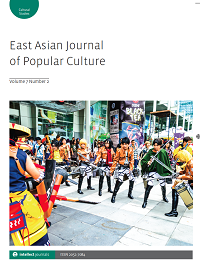
Full text loading...


Japanese pop idols occupy an ambiguous position in the broader popular music landscape, straddling a line between fiction and non-fiction, simultaneously characterological yet physically instantiated. As idealized representations of the girl or boy next door, idols serve as both ‘image characters’ who can be used to sell a variety of products, as well as ‘quasi companions’ meant to provide fans with a manufactured sense of intimacy. Using a joint quantitative and qualitative approach, this article analyses the lyrics of female idol groups. Specifically, I demonstrate how the combination of first- and second-person pronouns and sentence-final expressions are utilized to construct both female-coded and male-coded gendered personae, revealing that idol lyrics engage in the process of cross-gender performance. As a result, through their performance of these personae, female idol groups explicitly reinforce a binary imagination of normative gender expressions, allowing such idol groups to capitalize on idealized heterosexual adolescence through affective resonance and nostalgia.

Article metrics loading...

Full text loading...
References


Data & Media loading...
Publication Date:
https://doi.org/10.1386/eapc_00099_1 Published content will be available immediately after check-out or when it is released in case of a pre-order. Please make sure to be logged in to see all available purchase options.